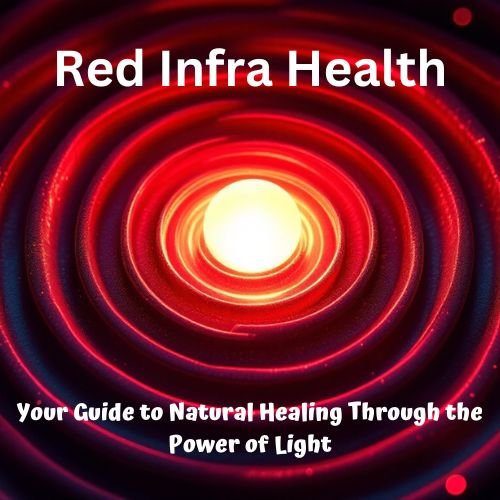Red light therapy, herbal remedies, and mindful movement offer you powerful natural options for managing arthritis pain. You can use red light treatments to boost cellular repair and reduce inflammation, while herbs like turmeric, ginger, and boswellia work similarly to conventional pain medications but with fewer side effects. Gentle exercises combined with mindfulness practices help maintain joint flexibility and reduce stress-related pain flare-ups. These natural approaches can work together to provide thorough relief, and you'll find they become more effective as you learn to integrate them into your daily routine. Let's explore how each method can transform your arthritis management.
Natural Light Treatments

The remarkable potential of red light therapy offers new hope for arthritis sufferers seeking natural pain relief. Through a process called photobiomodulation, red and near-infrared light penetrate your tissue to stimulate cellular energy production and natural healing mechanisms.
When you undergo red light therapy, it triggers your mitochondria to produce more ATP, your body's energy currency. This boost in cellular energy helps reduce inflammation, repair damaged tissues, and improve joint mobility.
You'll likely notice decreased joint stiffness and better range of motion as the therapy increases blood flow by releasing nitric oxide. Twenty-four percent of adults in the United States have some form of arthritis, making this treatment option particularly significant.
Clinical studies support these benefits, with research showing significant improvements in osteoarthritis pain and inflammation.
You can easily incorporate this treatment into your daily routine, with sessions lasting just twenty minutes each morning. Since there aren't any known harmful side effects, you'll find it's a safe alternative to long-term medication use.
You can use red light therapy on its own or combine it with other natural treatments for enhanced relief. It's non-invasive, and you can even use it at home to manage your daily arthritis symptoms while supporting your body's natural healing processes.
Herbal Pain Relief Options
Nature's medicine cabinet offers a diverse array of herbal remedies that can help manage your arthritis pain effectively. You'll find powerful anti-inflammatory compounds in turmeric and ginger, which work similarly to NSAIDs.
Boswellia serrata, also known as frankincense, can match the effectiveness of conventional pain medications for many arthritis sufferers. Modest pain relief can be expected when using these natural alternatives.
When it comes to topical applications, you can use eucalyptus or boswellia essential oils mixed with carrier oils to target painful joints directly. Aloe vera gel offers another easy-to-apply option that can help reduce inflammation when applied to affected areas.
You'll want to think about supplements like cat's claw, which works similarly to prescription RA medications by suppressing inflammatory compounds. Green tea's polyphenols and glucosamine sulfate can also provide relief for osteoarthritis symptoms.
However, you must exercise caution with these natural remedies. They're not FDA-regulated and can interact with your current medications, especially blood thinners.
Don't start any herbal treatment without consulting your healthcare provider first, and remember that these options work best as complementary treatments alongside conventional therapies, not as replacements.
Movement and Mindfulness Therapies

Combining movement and mindfulness offers a powerful approach to managing arthritis pain without medication. You'll find that gentle range of motion exercises, strengthening activities, and aerobic workouts can substantially improve your joint flexibility while building supporting muscles.
When you pair these physical activities with mindfulness practices like CBT and relaxation therapy, you're addressing both the physical and emotional aspects of arthritis management. People with joint protection techniques can significantly reduce stress on their joints during everyday activities through proper body mechanics and positioning.
Key benefits you'll experience from this combined approach include:
- Improved joint mobility and reduced stiffness through low-impact exercises like swimming and cycling
- Enhanced pain management through stress reduction techniques and meditation
- Better overall function and independence through targeted strength training and balance exercises
Your movement therapy should focus on gentle, progressive exercises that don't strain your joints. Complement this with heat therapy before exercise to loosen muscles and cold therapy afterward to reduce inflammation.
Consider working with a physical therapist to create a customized program that matches your abilities and goals. Remember that massage therapy can also play a valuable role in your routine, helping to relax muscles and improve circulation around affected joints.
Frequently Asked Questions
Can Dietary Changes Alone Cure Arthritis Completely?
No, you can't cure arthritis completely through diet alone. While dietary changes can substantially reduce your symptoms and inflammation, they're only one part of managing arthritis effectively. You'll need a thorough treatment approach.
How Long Does It Take to See Results From Natural Treatments?
You'll notice initial results from some natural treatments within days to weeks. However, for lasting benefits, you'll need 8-12 weeks of consistent treatment. Individual responses vary, so be patient with your healing journey.
Are Natural Remedies Safe to Use With Prescription Medications?
You shouldn't combine natural remedies with prescription medications without consulting your doctor first. There's a risk of harmful interactions, and since many natural products aren't FDA-regulated, safety isn't guaranteed when mixing them.
Which Arthritis Types Respond Best to Alternative Therapies?
You'll find that osteoarthritis and rheumatoid arthritis both respond well to alternative therapies. OA particularly benefits from physical approaches like massage and tai chi, while RA responds strongly to mindfulness and yoga practices.
Should I Stop Conventional Medicine When Starting Natural Treatments?
No, you shouldn't stop your conventional medications when starting natural treatments. You'll need to work with your doctor to safely integrate natural remedies while maintaining your prescribed medication routine to prevent dangerous disease flares.
In Summary
You've now learned three effective natural approaches to managing arthritis pain. Whether you're trying light therapy to reduce inflammation, exploring herbal remedies for relief, or practicing gentle movement with mindfulness techniques, these solutions can complement your existing treatment plan. Remember to check with your healthcare provider before starting any new therapy, and you'll be on your way to finding natural relief from arthritis discomfort.





Leave a Reply